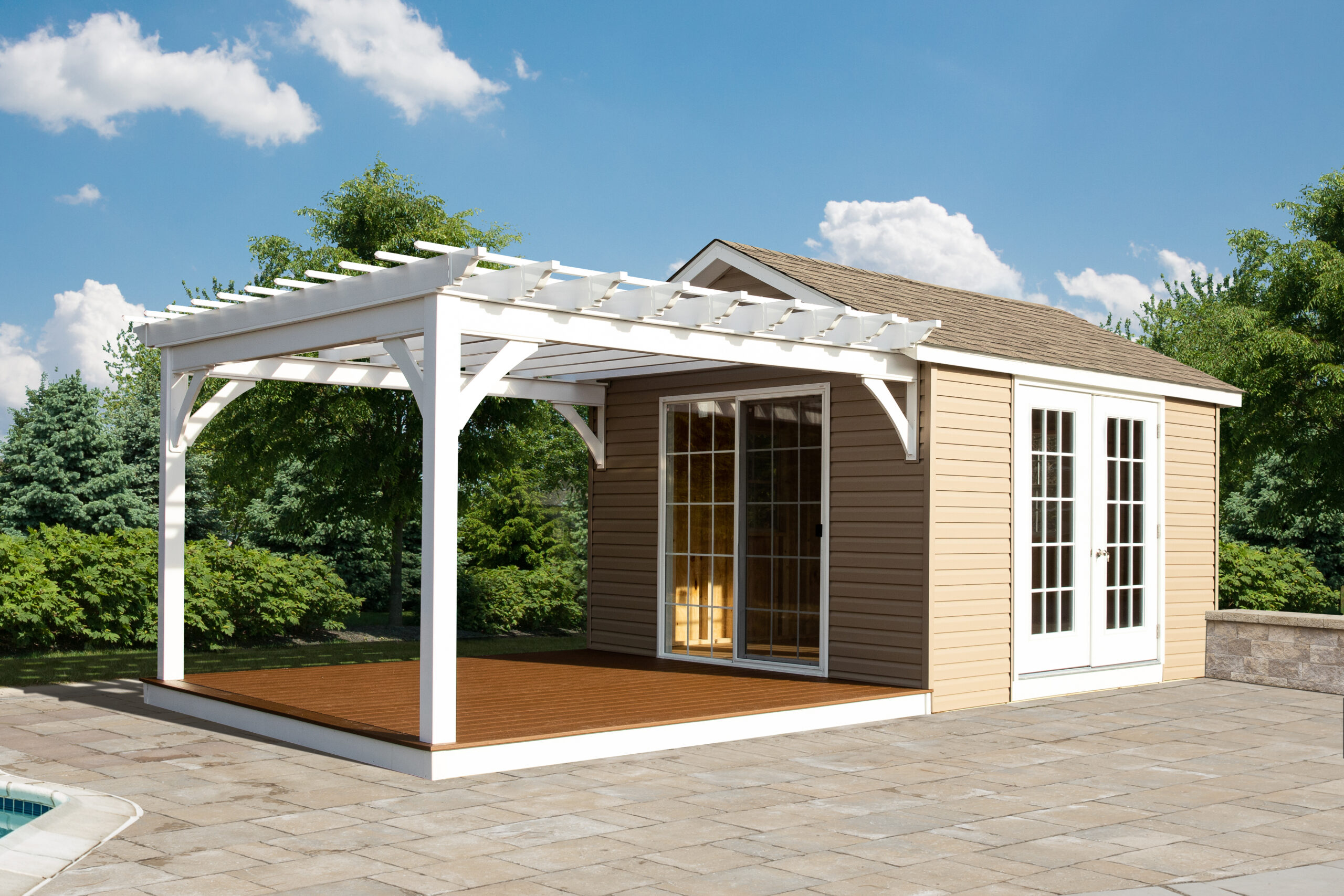There are several advantages to having a deep litter system in your chicken coop. It’s a sustainable and organic way to handle waste from your birds and improves your flock’s general health and well-being.
This thorough guide covers the fundamentals, advantages, and detailed instructions for setting up a deep litter chicken coop system. It also reviews essential factors and maintenance procedures to guarantee your feathered friends a healthy, cozy, and long-lasting home. Let’s get started.
Understanding the deep litter system
The deep litter system leaves bedding materials like wood shavings or straw to build up inside the chicken coop. This material breaks down over time, promoting the growth of microorganisms that aid with waste management and odor control.
The deep litter approach lets the bedding and manure buildup and decay inside the coop rather than having to be regularly scooped out and replaced. Because of this, you will only be cleaning your coop a few times a year.
Benefits of deep litter system
Natural waste decomposition: this system allows for the natural decomposition of chicken waste. As chicken moves around and scratches, the bedding material mixes with droppings. This mixture typically promotes the activity of beneficial microorganisms, promoting the breakdown of organic matter.
Reduced odors: a properly managed deep litter system can significantly reduce odors that come with chicken waste. The ongoing decomposition process together with regular turning of the bedding material helps to control ammonia release, providing a pleasant environment for caretakers and chickens.
Improved insulation: the material buildup acts as insulation, thus helping regulate the temperature within the chicken coop. This is especially beneficial in colder areas, providing extra warmth for the chickens during colder seasons.
Saves time and labor: a well-maintained deep litter chicken coop system, especially once established, can reduce the time and labor needed for daily cleaning and waste removal. Regular turning of the bedding material is more time-efficient than regular cleaning methods.
Critical considerations for deep litter management
When it comes to the deep litter system, you should have several considerations in mind. These include:
Bedding material: Suitable bedding material is one of the most important things you need to consider when implementing a deep litter system in your chicken coop. You can choose from various beddings, including wood shavings, straw, or a combination. Choose an absorbent material that facilitates composting and provides insulation.
Ventilation: adequate ventilation is critical in a deep litter system. It controls moisture levels and prevents the accumulation of harmful gases. In addition, sufficient airflow helps to maintain a healthy environment for the chickens.
Initial setup: start with a base layer of the bedding material you choose and gradually add to it as time goes by. The initial setup is crucial for creating a foundation that facilitates the microbial activity needed for decomposition.
Implementing the deep litter system
Now that you have a better understanding of the deep litter system, its benefits, and critical considerations before you start, let’s see how you can implement deep litter chicken coop.
Start with a layer of bedding material approximately 4-6 inches deep, covering the entire chicken coop floor. As the chickens move about and scratch, they will naturally mix the bedding. Regularly turn and fluff the bedding to encourage even decomposition and prevent compacted areas. This assists in maintaining a healthy microbial population, aiding in waste breakdown.
In addition, periodically add fresh bedding material to fill the coop floor. This ensures a clean and comfortable living space for your chicken while promoting the composition process.
Maintaining deep litter bedding
Little maintenance is crucial for the deep litter system to fully and functionally achieve the desired goal of creating compost. The deep litter will eventually overrun your area. It’s going to smell like ammonia. The smell indicates that too much nitrogen is being produced. It also shows gassing off of your nitrogen. Instead, you would prefer it to remain underground. Therefore, add more high-carbon litter.
The ammonia smell will alert you when it’s time to add more bedding, but you should also train your nose to detect it and add fresh litter before you notice it. Your goal should be to apply less material more frequently, which translates to smaller and fewer applications.
Cleaning out the deep litter
When the litter area gets too full, you must remove the rich-garden-ready compost. Push the top layer to the side until you reach the compost layer to clean your deep litter. Remove the compost and redistribute the whole litter.
Composting and using deep litter material
The deep litter chicken coop material is nutrient-rich and makes a great addition to compost. Recycle nutrients and establish a long-lasting waste management cycle in your garden using compost.
Harvest the composted material from the coop regularly, ensuring it decomposes adequately. This nutrient-rich compost can improve the soil in your garden and promote the growth of plants.
Conclusion
Adding a deep litter system to your chicken coop allows you to manage waste sustainably and efficiently while giving your flock a more natural and healthy environment. You may provide your hens with a clean, cozy, and secure environment while having nutrient-rich compost for your garden by understanding the concepts, considering critical factors, and adhering to best practices for bedding application and routine maintenance.
Need a chicken coop?
If you want to implement a deep litter system in poultry, you need a stable and high-quality chicken coop. At Backyard Escapes, we have Amish-built wooden chicken coops of various sizes and styles to suit your needs. Our chicken coops are designed with safety and comfort in mind. They are built by Amish Craftsmanship, guaranteeing you value for your money. Talk to us today, and we will deliver a customizable chicken coop in your ideal color, roofing material, and size to your location- and you will be able to enjoy the benefits that the deep litter system offers!


